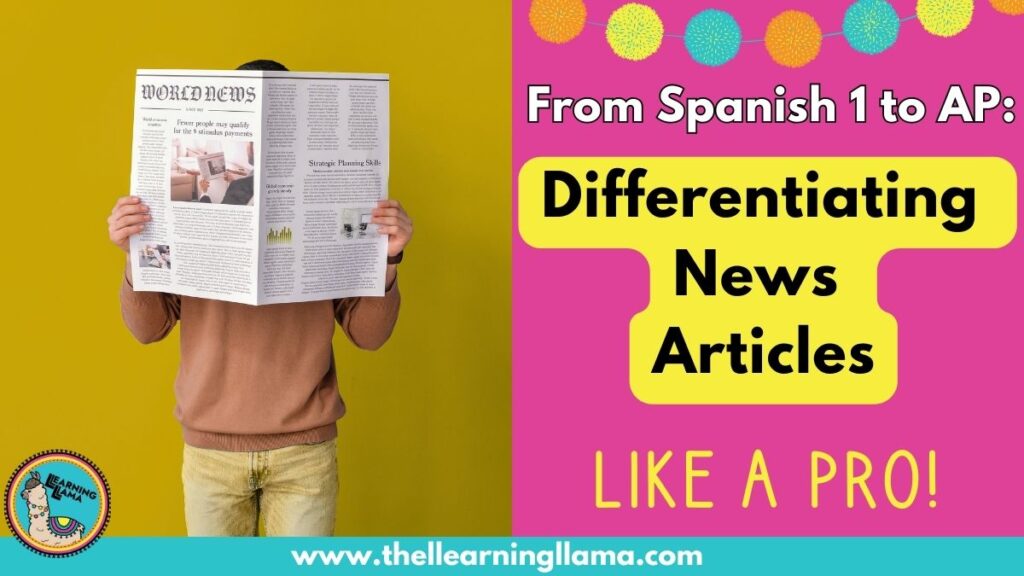So, you found an interesting news article in Spanish. The headline caught your attention and you knew your students would be intrigued. Maybe it was something like: Llamas Help Students Relax Before Final Exams or The 5 Strangest Jobs in the World. Whatever it is, you want to get the most bang for your buck with this authentic text.
When using a news article in Spanish class, teachers tend to think that only upper levels can truly read the article (unless you have a subscription to a news site for students like Newsela or Scholastic magazines – both of these provide differentiated versions of the same or similar texts).
But what happens when you find that one article that you want to share with ALL of your classes? Here’s when that could happen:
- Emergency Sub Plans: You found an article, but don’t have time for multiple lesson plans
- Days before a holiday break when you need a quick cultural lesson
- Important current events that all students should learn about: natural disasters, politics, etc.
Let’s break down how you can use one news article in Spanish with 4 or more levels of language learners! I’m going to use this example article: “Detienen a un pasajero que pretendía ingresar a Perú con 160 animales exóticos en su equipaje.” I’ll be honest, when I saw the title, I was hooked and had to click to see more!
If you want to try out these ideas below, I created simple worksheets for all 5 levels (plus reflections!) to make it easy to print and assign. This is great if you’re in a hurry, need an emergency sub plan, or a quick Monday lesson!
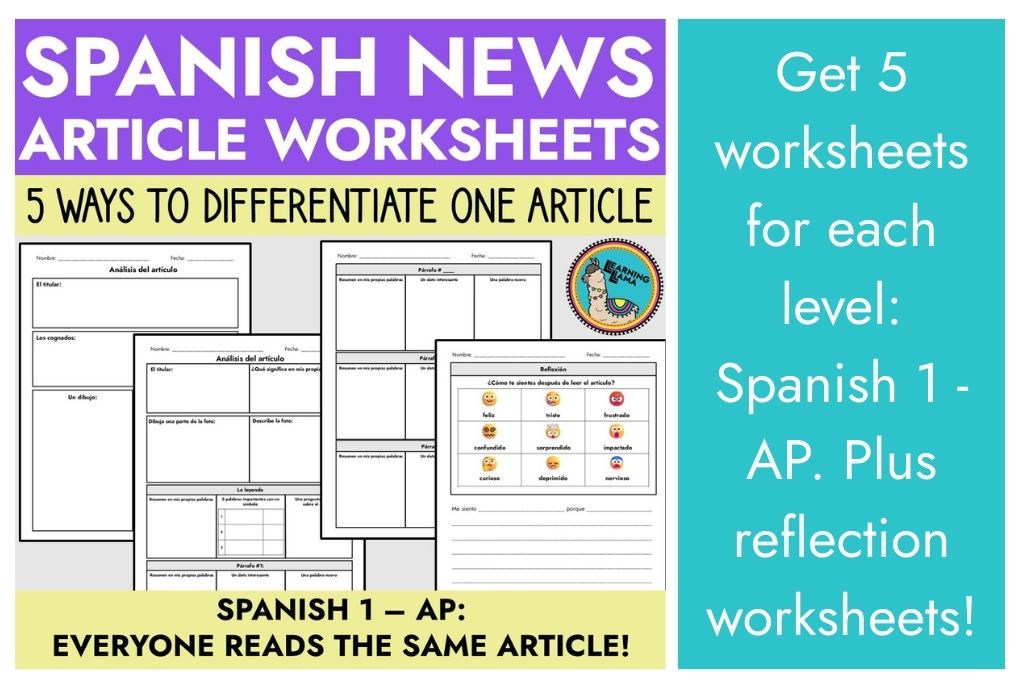
Level 1
Headline and photo
Even your novice low-mid students can “read” a news article. Now, this won’t include reading the article at all, but your Level 1 students will look at the headline and image. When reading the headline, ask students to identify cognates. Then, with the words they do not know, they should try to use context clues to figure out what they mean. Students should then piece together the meaning of the headline.
With the image, you will ask students to identify what they see in the image. If they do not know the appropriate vocabulary, provide them with input. Use the same vocabulary from the headline to introduce the image.
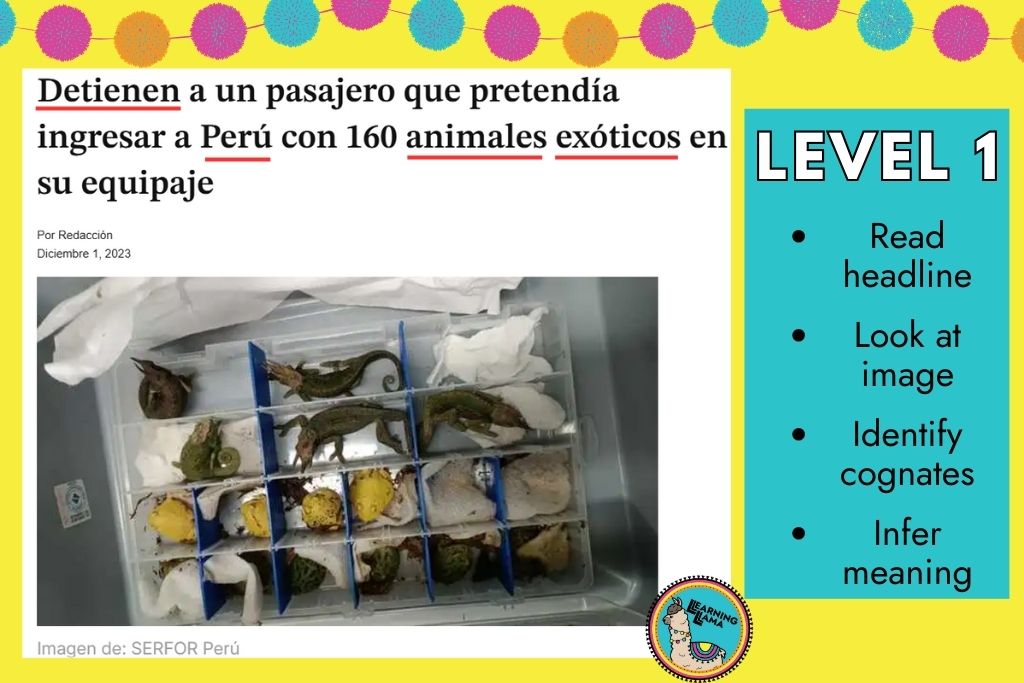
Level 2
Headline, photo, caption, maybe 1st paragraph
Level 2 students are ready for one step up from just the headline and photo. Now, they can read the headline, hopefully identifying more than just cognates. Ideally, they can look at the image and read the caption. When reading the caption, students can answer Who, What, Where, When, Why, How. They don’t need to do this in their own words if they aren’t ready, but they should be able to pull out words from the caption text that answer those main questions.
If you are at least half way through the year, maybe you feel comfortable enough to introduce the first paragraph of the article. That is where the meat of the information and facts are in any news article. So, it shouldn’t be filled with fluffy details.
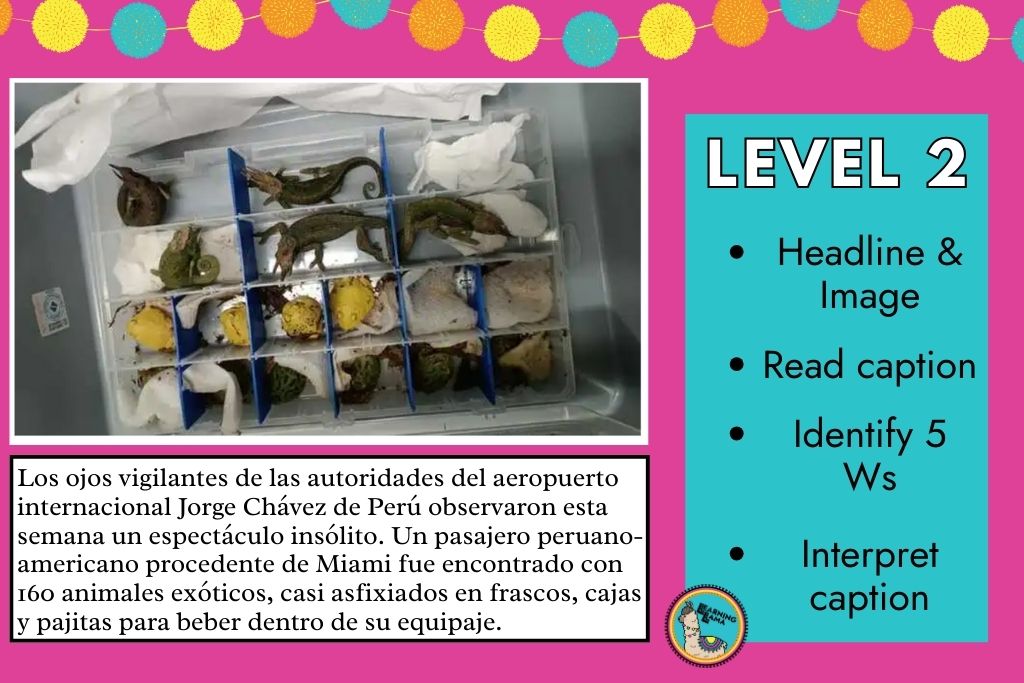
Level 3
Headline, photo, caption, and read the text, identifying cognates, main idea of the first paragraph
In Level 3, your students should be ready to read the entire text. But prior to this, have them read the headline and look at the photo, just like your Spanish 1 and 2 students. By doing this, they will have more confidence and a greater understanding going into the article. (This is a skill they will build on, so if they have you for multiple years in a row, they will know how to do this!)
If you don’t have time or students are not ready for the whole article, then the first paragraph is the best place to start. As students read the paragraph, they should identify its main idea. Leave out the supporting details for now. Next to the paragraph, they can write a brief summary in their own words.
If you want to have your students annotate the text, this is the perfect time to do that. Plus, you can get a FREE set of annotation symbols here to use during any reading. Learn strategies for close readings on this blog post.
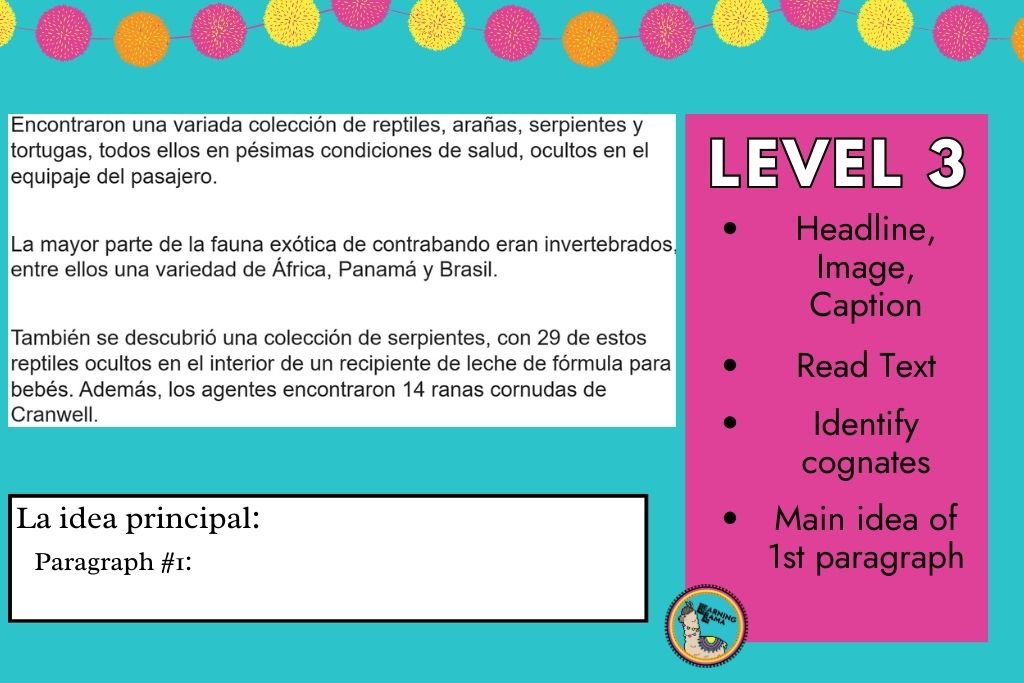
Level 4 + Beyond
Everything! Read it for understanding and check for comprehension.
Just like with every level, you will begin with the headline and photo. But when reading the text this time, students will be identifying the main idea and you will check for comprehension.
You will build off of the main idea that Level 3 students were reading for. Now, you want students to identify supporting details. You can ask specific comprehension questions to check for understanding. To challenge your students, let THEM come up with comprehension questions for one another.
This is a great time for students to also identify new vocabulary terms. As they read, they can use context clues and create a list of 5-10 words associated with the main idea of the article.
One of the greatest ways to ensure that ALL students are reading the article is by grouping students and assigning each a “Reading Role.” Each person in the group is responsible for a different task: summarize, infer, discuss, question, etc. Then, they lead part of the group discussion after reading.
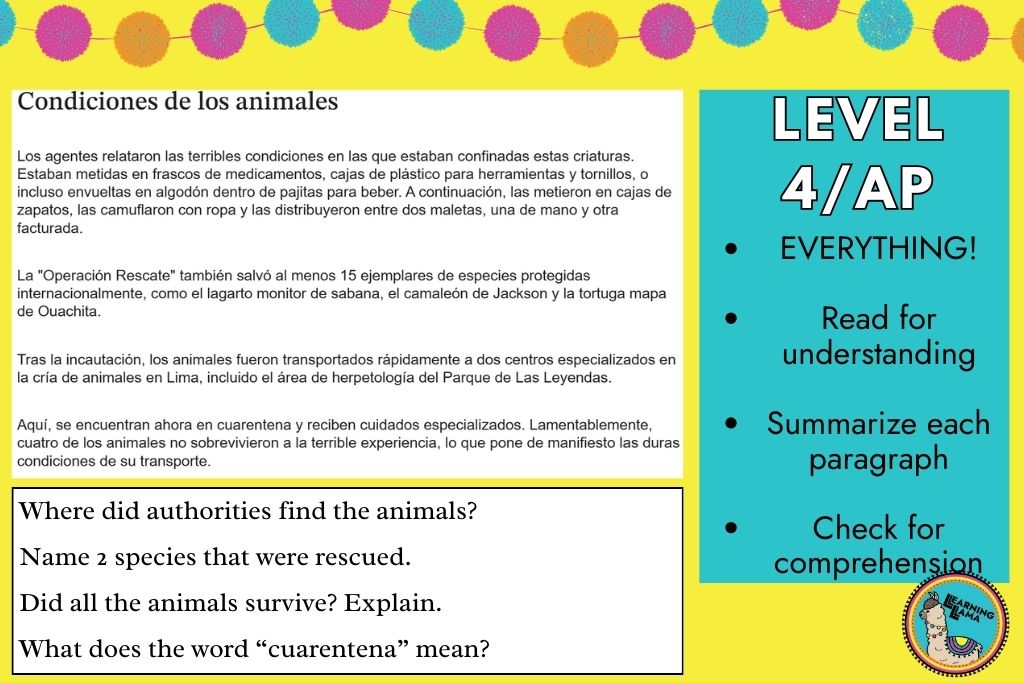
Post-Reading Activities for News Articles in Spanish
Here are 4 post-reading activities you can do after you read a news article in Spanish.
- Reflection: Reflect on the article, image, headline, etc. ANY level can do this post-reading activity. Ask students which emoji best represents their emotion/feeling after reading the article or headline. Give them any 4 options (happy
, sad
, frustrated
, confused
, mind blown
, surprised
, curious
, etc.) Get these worksheets here!
- Level 1 students can simply say “Me siento ___.”
- Level 2 students may add porque and cite evidence from the headline or image.
- Level 3 and 4 students can explain why in their own words.
- Summarize: Summarize the article in your own words. Retelling in the second language is an important skill. Students should use a graphic organizer to summarize their thoughts first. You can find some worksheets here. Then, make sure they use transition words to piece together the ideas from their organizer into a fluid article.
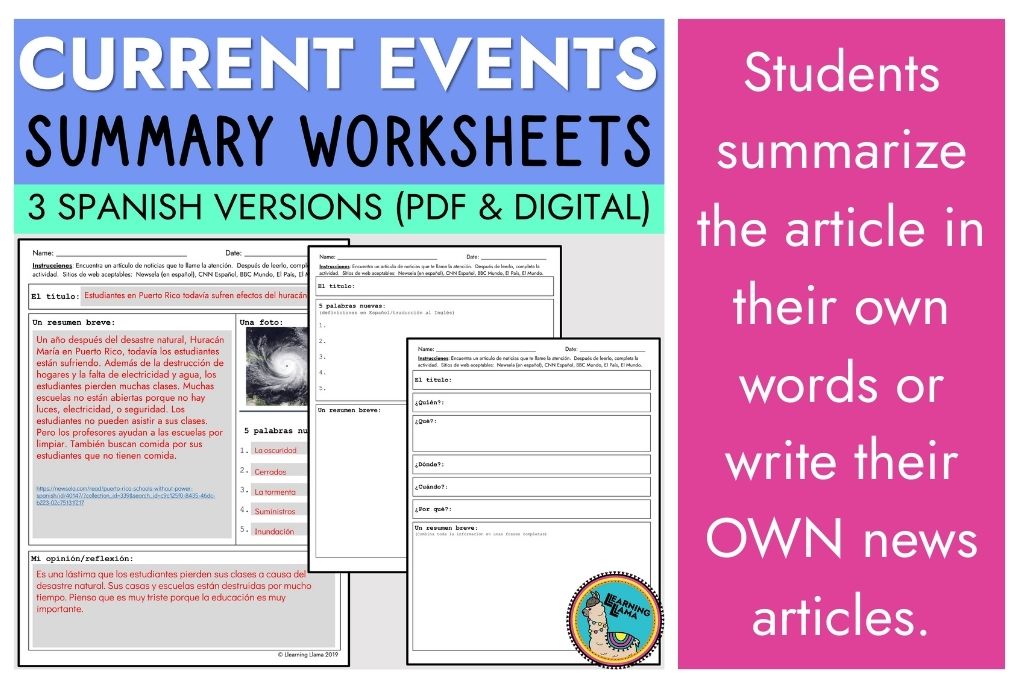
- Learn more: Sometimes articles prompt us to want to know more about the topic. Students could research more on a specific detail from the text. Take our example article for instance. Students may want to learn more about a specific exotic animal in the text, prohibited/permitted items when traveling, or about one of the rescue organizations.
- Write Your Own Article: Now, students can write their own news articles. Let them choose a topic of interest, or they can elaborate on one of the articles from class. You may even have students write about events going on around your school or community. Here are templates for writing your own news article in Spanish.
So, now you are ready! You can take just ONE article and use it in every single class you teach! Plus, you don’t even have to lift a finger. I’ve created the worksheets for you! (Digital + PDF) You can get all 5 worksheets for Spanish 1 to AP Spanish so every student can read the same news article in Spanish but with differentiation. Print and go! There is no work for you other than to find a news article! Get the worksheets here.

